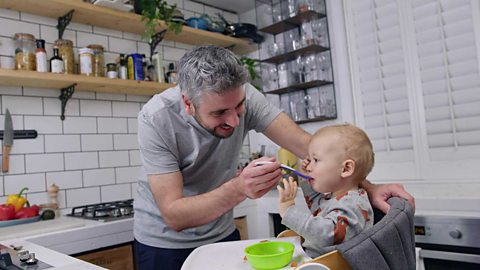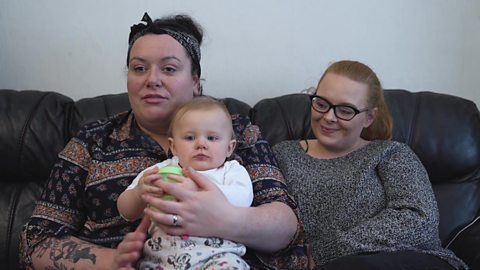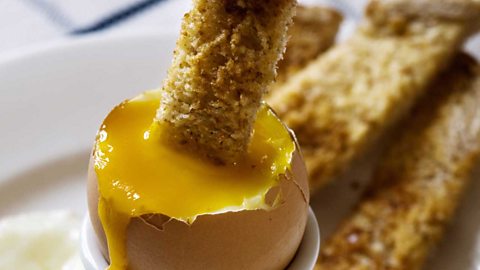If your dinner table feels like a battleground, youãre not alone ã fussy eating in toddlers is surprisingly common.
ãDepending on which study you look at, around 40% of children go through a fussy phase according to their parents and around a quarter will refuse at least one food every day,ã says registered dietitian Lucy Neary of The Early Years Dietitian, who works with babies and children.
It tends to start around the age of 15-18 months and peak at around two years, explains Lucy.
ãLots of children start to refuse new foods and they might refuse dishes at home that theyãve eaten elsewhere like nursery or a cafûˋ. They might also start leaning towards certain textures and safe, processed foods.ã
You want your child to eat well and be healthy, so their fussiness can be incredibly emotional and stressful. ãParents tend to blame themselves,ã explains Lucy. ãCooking is wrapped up in love so if your child doesnãt eat your food, itãs natural to take it personally.
Then thereãs the added stresses of ãWhat do I give them now? Will they be OK? Are they growing properly?ã. You get swept up in this vicious cycle and mealtimes become increasingly negative experiences. One of the first things I do with people is try help them to understand why picky eating in toddlers happens and how it's not their fault.ã
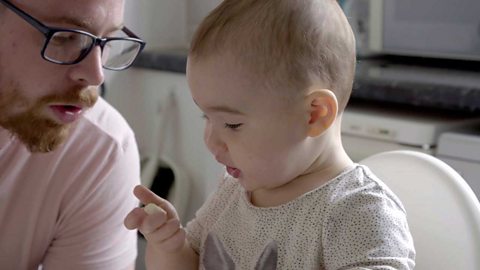
Weaning tips: heading off fussy eating
Although itãs not possible to completely prevent your child from becoming a fussy eater, there are preventative steps you can take during weaning to lessen the impact, says Lucy. ãThereãs a critical window during weaning up to around 10 months when children eat anything.ã
ãOne of the things I suggest during the weaning process is to allow your baby to eat until they're full, as babies are born knowing how much they need to eat. Give them lots of different colours and textures. And I recommend two weeks at the very start of weaning when they eat primarily green vegetables. Children have a naturally sweet tooth and green vegetables can taste bitter so get them used to the flavour with things like broccoli, spinach, kale, courgettes and green beans. After this age, they tend to be less accepting and thereãs research to show that this approach can help them become less fussy as toddlers.ã

If your toddler is already a fussy eater
All is not lost if the weaning window has passed ã there are plenty of ways you can encourage your toddler to develop a healthy attitude towards food and keep your cool. ãYou might want magic, instant answers but handling fussy eating is largely about taking it back to basics,ã explains Lucy.
8 tips to encourage your fussy toddler to eat
1. Donãt pressure them
If youãre having a stressful dinner, itãs second-nature to try some hard ãGo on, just one more bite!ã negotiation. But this is counter-productive and can fuel fussy eating, explains Lucy. ãIt can make your child afraid of mealtimes, which is why when they get to the dinner table, they might say ãI'm not hungryã. We all know that when weãre stressed as adults, about interviews or tests for instance, our appetite tends to drop. Finishing whatãs on your plate is engrained in us from our childhoods but children should be in charge of how much they eat.ã
2. Monitor their weight and height
ãIf you weigh and measure your child regularly and log these, it can put your mind at ease because youãll see that theyãre growing well,ã advises Lucy. If you have any concerns about your childãs growth, then be sure to bring it up with your health visitor or GP.
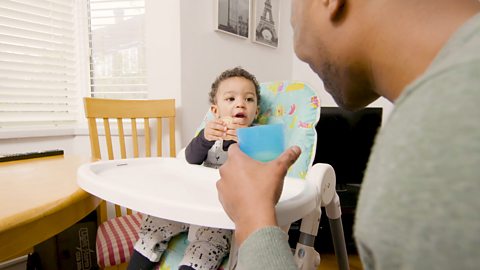
3. Eat as a family (when you can)
Itãs a great opportunity to talk and interact but it also gives you the chance to be a positive role model, explains Lucy. ãChildren learn by copying. So sit down with your children, eat with them, show them that you are enjoying eating. If you donãt, then children can think: ãWell, why am I doing this?ã.
4. Get your children involved with meals
ãThereãs a reason that people who like cooking like eating ã itãs because they're interested in food, they've learned about it, they understand flavours and where things come from,ã explains Lucy. ãLetãs be realistic, weãre all busy and you wonãt be able to do it every day but as much as you can, get your toddler involved: washing fruit and vegetables, getting things out of the cupboard, cracking eggs. The more they have food in their hands and they're interacting with it, the more it will break down their fears and worries.ã
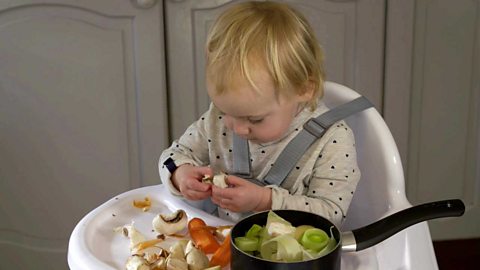
5. Talk positively about food
ãAvoid negative language around food and your body,ã say Lucy. ãThrowaway comments like ãI can't eat that!ã stick in a childãs mind and communicate they shouldn't eat certain things.ã
6. Teach them that all food is just food
ãAvoid putting certain foods on a pedestal and using them as a bargaining tool. For example, ãIf you eat your broccoli, youãll get ice creamã. We know from the research that this makes fussy eating worse, because you're telling that child that broccoli is bad, and ice cream is good. Your message should be that all food is tasty and is there to be enjoyed.ã
7. Have set meal and snack times
ãGet into a routine and avoid grazing if you can help it,ã says Lucy.
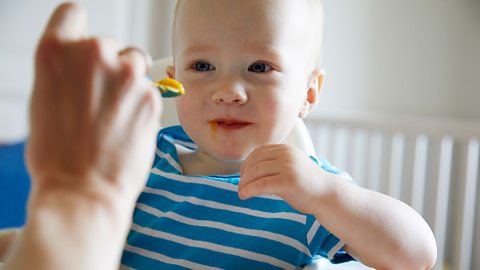
8. Be realistic
Donãt put too much pressure on yourself and remember that lots of families are dealing with the same dinner battles as you, says Lucy. ãSometimes this reassurance can help you feel more positively about feeding your little one.ã
So, fussiness is normal, but when should you be worried?
ãIf your child is extremely fussy and by this, I mean itãs been going on for months, or years, rather than just weeks and youãre looking at a really quite limited diet, avoiding whole food groups,ã says Lucy. ãAnd perhaps it's affecting them in another way, for example theyãre constipated, youãre worried about their growth, they seem to be very tired and lethargic, or they don't sleep well. Then see your GP. From here you can get a referral to see a dietician.ã
For more advice on fussy eaters, check out the

